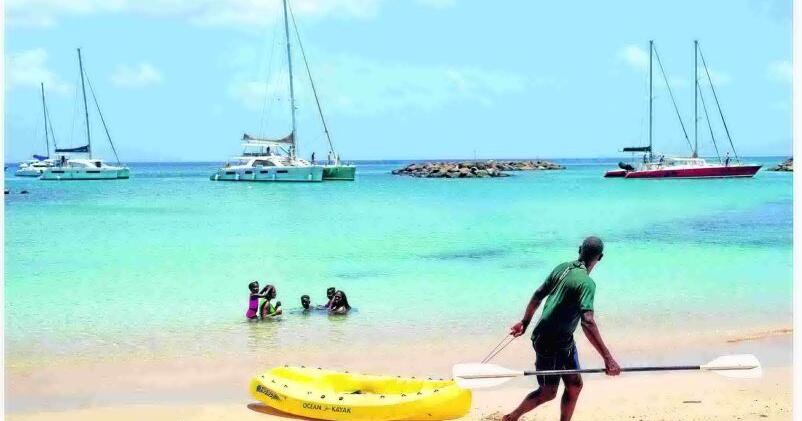TROPICAL WEATHER | CARIBBEAN
SAN JUAN, Puerto Rico — Hurricane Beryl strengthened into what experts called an “extremely dangerous” Category 4 storm as it approached the southeast Caribbean, which began shutting down Sunday as government officials pleaded for people to take shelter.
Beryl strengthened into a Category 3 hurricane earlier in the day, becoming the first major hurricane east of the Lesser Antilles on record for June, according to Philip Klotzbach, Colorado State University hurricane researcher.
It took Beryl only 42 hours to strengthen from a tropical depression to a major hurricane — a feat accomplished only six other times in Atlantic hurricane history, and with Sept. 1 as the earliest date, according to hurricane expert Sam Lillo.
Beryl is now the earliest Category 4 Atlantic hurricane on record, besting Hurricane Dennis, which became a Category 4 storm on July 8, 2005, hurricane specialist and storm surge expert Michael Lowry said.
People are also reading…
“Beryl is an extremely dangerous and rare hurricane for this time of year in this area,” he said in a phone interview. “Unusual is an understatement. Beryl is already a historic hurricane and it hasn’t struck yet.”
Hurricane Ivan in 2004 was the last strongest hurricane to hit the southeast Caribbean, causing catastrophic damage in Grenada as a Category 3 storm. “So this is a serious threat, a very serious threat,” Lowry said of Beryl.
Beryl also marks the farthest east a hurricane formed in the tropical Atlantic in June, breaking a record set in 1933, Klotzbach said.
Warm waters fueled Beryl, with ocean heat content in the deep Atlantic the highest on record for this time of year, according to Brian McNoldy, University of Miami tropical meteorology researcher. Lowry said the waters are now warmer than they would be at the peak of the hurricane season in September.
“This is a very serious situation developing for the Windward Islands,” warned the National Hurricane Center in Miami, which said Beryl was “forecast to bring life-threatening winds and storm surge.”
Beryl had maximum sustained winds of 130 mph, with hurricane-force winds extending 35 miles from its center. Forecasters warned of a storm surge of up to 9 feet in areas where Beryl will make landfall, with up to 6 inches of rain for Barbados and nearby islands.
The storm was expected to make landfall Monday morning in the Windward Islands. Hurricane warnings were in effect for Barbados, St. Lucia, Grenada, Tobago and St. Vincent and the Grenadines. Long lines formed at gas stations and grocery stores in Barbados and other islands as people rushed to prepare.
Beryl was expected to pass just south of Barbados early Monday and then head into the Caribbean Sea as a major hurricane on a path toward Jamaica. It was expected to weaken by midweek, but still remain a hurricane as it heads toward Mexico.
It’s the second named storm in what is forecast to be an above-average hurricane season, which runs from June 1 to Nov. 30 in the Atlantic. In June, Tropical Storm Alberto came ashore in northeastern Mexico with heavy rains that resulted in four deaths.





